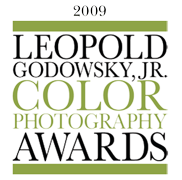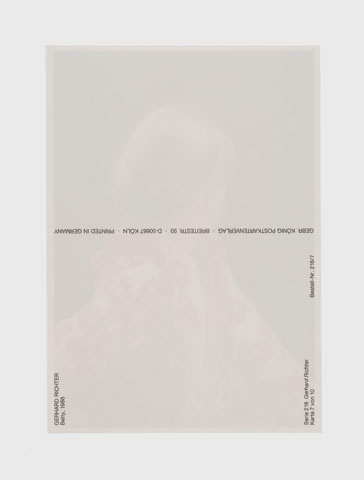


|

|

|
 |
 |
 |
| Claudia Angelmaier, Betty, 2008 |

Since 1987, the Photographic Resource Center at Boston University has had the privilege to organize and present the Leopold Godowsky, Jr. Color Photography Awards. The awards acknowledge contemporary photographers working in color and are named in honor of Leopold Godowsky, Jr., the co-inventor of Kodachrome film, and a man whose contributions have had a major and lasting impact on the medium of photography. Over the course of seven award cycles, the awards have bolstered the careers of some 30 individual artists representing more than 18 countries. Besides the exhibition, the award includes an honorarium, a website, and a publication.
Like its previous incarnation, the theme of the 2009 Leopold Godowsky, Jr. Color Photography Awards is truly international in scope. To further strengthen and expand upon this motif, the PRC aimed to focus this award cycle on emerging artists and new approaches. The PRC sought nominations from close to 200 top directors, curators, critics, and authors in the photographic and contemporary art communities. Eighty-five artists and artist teams submitted their work for the jury, which was held in May. Jurors for the 2009 Leopold Godowsky, Jr. Color Photography Awards were William Ewing, Director, Musée de l'Elysée (Lausanne, Switzerland) and Hannah Frieser, Director, Light Work (Syracuse, NY, USA), along with Leslie K. Brown, former PRC Curator and Jennifer Uhrhane, Godowsky Curatorial Fellow.
The awards were granted based on the sole criterion of excellence, as represented by a portfolio of color images made within the previous two years — and created using any color process. By acknowledging such international photographic talent, the PRC hopes to bring to light issues important to individual photographers as well as the global community, and also introduce these photographers and their work to this region.
The Leopold Godowsky, Jr. Color Photography Awards often reflect current cultural issues and artworld trends, and this year's exhibition is no exception. Each of the selected artists also addresses major approaches, strategies, and themes within contemporary art and photography today. Using analog film and transformative lighting, Alejandro Chaskielberg gives us an alternative way of looking at documentary that references cinema, while Nicholas Kahn and Richard Selesnick create new narratives that reference paintings and comment upon world issues. In her images of postcards depicting famous paintings, Claudia Angelmaier touches upon issues of feminism, art reproduction, and appropriation, while Curtis Mann pushes boundaries of authorship and the medium of photography itself in his hybrid, altered images.
Reflecting the exciting evolution of photography since Godowsky's and Leopold Mannes's invention (and even since the establishment of these awards), the definitions of "color" as well as "photograph" have radically changed and the works in this exhibition demonstrate this shift. In the wake of the digital revolution, we can only guess the technological developments in color that are yet to come. Sadly, on June 22, 2009, Kodak announced Kodachrome would no longer be manufactured. However, given its 74-year reign, it still remains one of the longest continuously produced films in the history of photography.
In addition to honoring the current recipients, it is one of the goals of the PRC to pay homage to the seminal histories of the Leopold Godowsky, Jr. Color Photography Awards, Godowsky and Mannes, and Kodachrome films. While the PRC's website features further information on past awards, we invite you to visit and explore this new Godowsky website.
In concert with the PRC, this year's awards and exhibition were organized by Leslie K. Brown, former PRC Curator, and Jennifer Uhrhane, Godowsky Curatorial Fellow. The PRC would like to acknowledge the generosity of Leopold Godowsky III, Alexi Gershwin, Georgia Keidan, Nadia Natali, Marc Gershwin, and the late Frances Gershwin Godowsky for their initial funding and support of the awards. Finally, we are grateful to the PRC staff and board, as well as the nominators, jurors, and artists for their participation and cooperation with this project.













